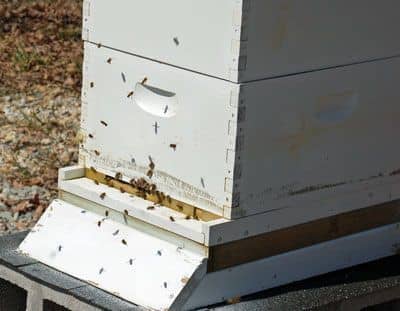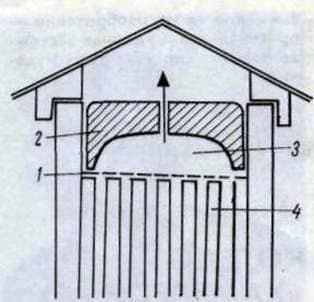
The Leningrad worker proposed an original way of removing excess moisture from the hive, which would create more comfortable conditions for the wintering of bees.
Usually, a propolis “mat” serves as a stopper for the nest of bees in the hive from below, and a pillow of airtight materials serves as a thermal ceiling. But they keep it warm in winter, and excess moisture from the hive is not enough. Someone for the ventilation bends the “mat” and sets the grid. But the expected effect is not obtained, as warm moist air rises and spreads throughout the section of the hive, which the bees sit around. At low temperatures, the supercooled cushion and propolis “mat” become condensers of moisture and do not release moist air in the desired amount. The vent does not always work, because in the way of moist air there are a frame, walls and the bottom of the hive.
To keep the heat in the cool season and to remove excess moisture from the nest, the beekeeper recommends placing nets from materials that repel moisture as the nest’s stopper. This can be nylon or metal. For thermal ceiling, too, we need heaters that repel moisture. The moss, fine shavings, sawdust, cotton wool in a polyethylene bag, foam and other materials with low thermal conductivity are suitable.
Between the nest limiter and the thermal ceiling, a nesting chamber is needed, which will ensure the release of excess moisture from all the streets of the bee house. It is reliably protected from the low temperatures of the undercoverment. The pressure in it will always be higher than for the hive. Air through a special hole tends to go outside, and the zone of increased pressure it will not go. It turns out a kind of gate. In the cold season it is necessary to wrap the hive approximately one third of the height with a thermal insulation material. Then the coolest section of the bee house will be the area of the pilot hole. Through it something will come out with excess moisture. The pilot hole will not break the microclimate in the hive, if it is not completely covered by the board, leaving a small air space covered with a loose insulation.
The worker-inventor continuously searches for the most rational designs of the hives, which create comfortable conditions for bees at any time of the year. For further research, observations collected in different climatic zones are needed, so the innovator will readily enter into contact with other beekeepers.

Between the limiter of the socket 1 and the heat ceiling 2 there must be a nested air chamber 3 that connects to the undercover space through the access holes with a diameter of 7-12 mm. 4-frames. The hole in the hole does not disturb the microclimate in the hive, if it is not completely covered by the board, leaving a small air space covered with a loose insulation.
An experienced beekeeper, maybe without opening a hive, find out how the bee family feels.
Дрожжевая паста рецепт. Уход за пчелами в лежаках.
Fixtures and fixtures